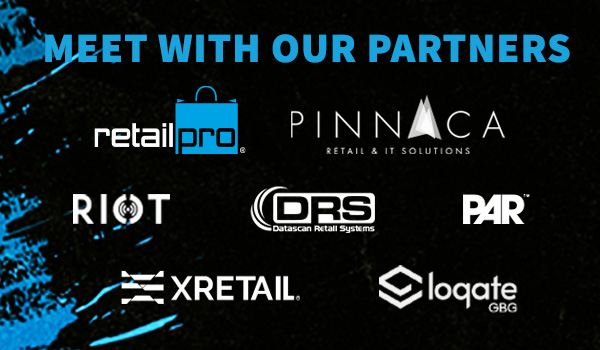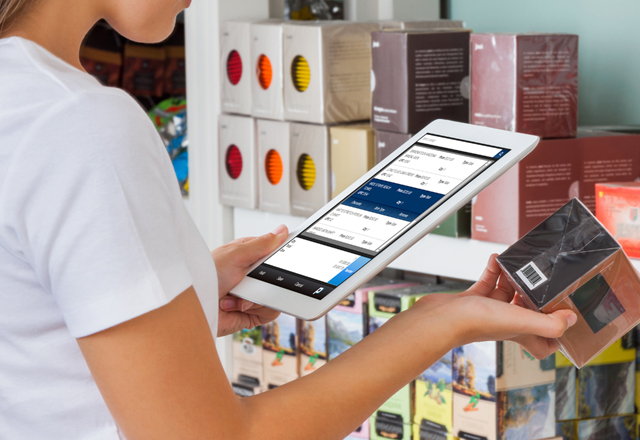6 Ways to connect your physical and digital store operations with Retail Pro Prism for better omnichannel experiences

The struggle is real for customers hoping to take some of the legwork out of shopping by researching products online before heading to a store – only to make the drive and discover the product they decided on isn’t available, as it is in omnichannel experiences they have at other stores.
For retailers, such deflating experiences can mean a loss of loyal customers as well as a damaged reputation.
As shoppers become more strapped for leisure time and less willing to browse for hours just for fun, connecting a physical and digital store experience is increasingly critical for retail longevity.
It’s all about what some refer to as Retail FOMO: That is, customers’ fear of missing out on things they want, and retailers’ fear of missing a sale.
Here are 6 ways you can connect your physical and digital store experiences with Retail Pro Prism POS and retail management software to remove some of the friction shoppers are experiencing while retailers are building their omnichannel strategies.
1. Show in-store stock availability online

Research suggests that roughly a quarter of customers won’t visit a store if they aren’t sure what they are looking for is available. In addition, more than half will leave a store disappointed if they can’t find the item they had in mind.
One way to avoid that is by showing customers stock availability online. That way e-window shoppers can be assured that what they are looking for is available when they visit.
And, in the unfortunate case that a particular item is sold moments before a shopper arrives, enabling in-store ordering for free home delivery is one way to compensate the customer.
Retail Pro Prism has accessible APIs and hundreds of Plugins and integrations on the Retail Pro App Market to help retailers connect their ecommerce with inventory information in Retail Pro.
The ability to straightforwardly integrate any technology retailers already use (or might choose to use in the future) gives retailers control over decisions like which platform will be the data master through which they’ll reference and report on stock availability and needs across all their store locations, including ecommerce.
2. Show off your full selection with endless aisle

Endless aisle can accommodate retailers that, often because of a small physical footprint, can’t stock a wide range of products.
The technology lets customers virtually browse or order a wide range of products that are either out of stock or not sold in-store and have them shipped to the store or their home.
Because Retail Pro Prism is browser-based software and not solely a mobile or desktop app, retailers can run Retail Pro both on their desktop computer or laptop at the till – or on an iPad or other mobile device so that sales associates can access inventory information when helping customers on the sales floor.
So when a product is not available at this store, sales associates can easily show customers the item images for the product they want and place an order for them, saving the sale.
3. Give them an occasion to shop in-store

In addition to providing a better customer experience, providing inventory information drives customers into stores, opening the door to additional purchases.
Impulse buys are more common for shoppers at brick-and-mortar retailers, because those stores can influence customer shopping experiences by tailoring layout and staffing decisions based on their clientele.
According to A.T. Kearney, 40 percent of customers make unplanned purchases at physical stores and spend more money, compared to 25 percent of online shoppers.
4. Reward their loyalty across channels
Aligning physical and digital stores also means ensuring that shopping benefits are equivalent.
Loyalty rewards should be earned in the same manner, for example, and coupons should be valid online and in-person. Being a rewards member should be the ultimate frictionless experience.
Using an integrated loyalty platform like AppCard or OptCulture with Retail Pro Prism not only saves your associates and customers time at checkout when handling loyalty, but also ties in the POS transaction data with your loyalty platform so you can run campaigns based on actual purchase data.
5. Work out the kinks for online returns in-store
Despite the best intentions of retailers and customers, sometimes merchandise must be returned. How a retailer handles this onerous process with the customer is reflective of its overall commitment to customer service.
By working through the kinks for in-store returns of online purchases, retailers can offer their shoppers a less stressful initial purchasing experience, because they are assured that if they are unsatisfied, returning is a simple process.
Because all inventory items (whether online or in-store) would have been created in Retail Pro Prism and then used to populate a retailer’s online inventory when integrated, retailers will be able to accept the online inventory without the backend hassle of accounting for online versus in-store purchase origin.
Once the item is returned, it can be assimilated into the physical store inventory, accounted for and ready to be resold.
6. Help your store staff get to know your omnichannel shoppers
When a customer begins a journey online, or has a history of shopping through a retailer’s online channel, that data can and should be used to personalize the in-store shopping experience.
By analyzing and connecting transactional data from their Retail Pro POS into one holistic view, retailers can learn how often a customer shops, what they purchased, where they are from, how much they spend across different channels, and whether they are new or repeat buyers.
That can help inform associates in the physical store as they engage with shoppers, as well as help form future decisions for an omnichannel product and customer engagement strategy, especially when retailers use an integrated business intelligence and visual analytics solution with the rich data they collect at the Retail Pro Prism point of sale.
The information conduit flows both ways now, not just as a funnel into one channel or another, so retailers can fix broken customer journeys and convert more sales, improve efficiency and increase loyalty.
Bringing both worlds together – digital and physical – will mean some parts of the journey will still have bumps along the way.
But addressing the operational challenges in each of these areas will help retailers smooth some of the friction that arises as they build their omnichannel strategy.
Going to the
2022 Retail Technology Show?
26-27 April 2022 | Olympia, London | Stand 6e28

About Pinnaca Retail & IT Solutions
Founded in 2015, Pinnaca Retail & IT Solutions is a family-run business offering retail solutions, specialist management consultancy and IT services. Our company is UK based, with offices in London, and a client base across the globe.
We work with all levels of business to define and develop strategies focused on our clients’ needs and objectives. Our tailored solutions are developed and optimised to fulfil your key business demands.
Over time we have added to our 20 years’ experience in the field and built up a team of experts, with a wide range of experience and in-depth knowledge, who are eager to help your business succeed and grow.
About DataScan Retail Systems
Datascan Retail Systems are a leading UK and European supplier of solutions to the retail sector, from small businesses through to mid-tier and international enterprises. We have vast experience in the analysis and design of retail IT and the implementation of EPOS and Stock Control Systems and provide all the services required to plan, implement and maintain an effective Retail Management System. We are committed to match the Retail Pro System to the exact needs of the retailer, utilising our development, training and help desk teams.
About RIOT
RIOT is turning traditional RFID solutions for retail on their head with RIOT Insight. Insight is RIOT’s real-time inventory accuracy service offered as a simple but powerful add-on to a retailer’s existing systems. 100% inventory accuracy to support Omni-channel is now yours on demand.
About PAR
PAR Technology Corporation provides industry leading software and hardware solutions that are always there when you need them but never in your way.
- State of the Art Point of Sale Systems.
- Tablets and Portable Devices.
About XRetail
XRETAIL is a Global leader in Unified Commerce solutions, with a prime mission to empower enterprise retailers by helping to boost their sales and retain their clients. Through state-of-the-art technologies, integrations, and solutions, the XRETAIL platform creates unified sales channels including eCommerce, Mobile commerce, and Social commerce. XRETAIL’s Cloud-based platform creates seamless end-to-end solutions allowing enterprise retailers to blend brick-and-mortar and digital retailing into one unified platform, with notably enhanced customer experience both online and offline.
About Loqate
Combining leading technology with the richest data, Loqate provides several solutions to help bring businesses across the globe closer to their customers:
Address Validation
A faster, easier way to capture and verify addresses in real-time for your online forms and checkouts.
Email validation
Increase email delivery rates, boost customer marketing and reduce bogus registration when you verify email addresses upfront.
Mobile & phone validation
Take the guesswork out of reaching customers. Capture the right phone number, mobile or landline at the point of entry.
Data maintenance
The foundation of any customer management strategy, Loqate’s cleansing and maintenance software helps build lasting customer relationships.














































